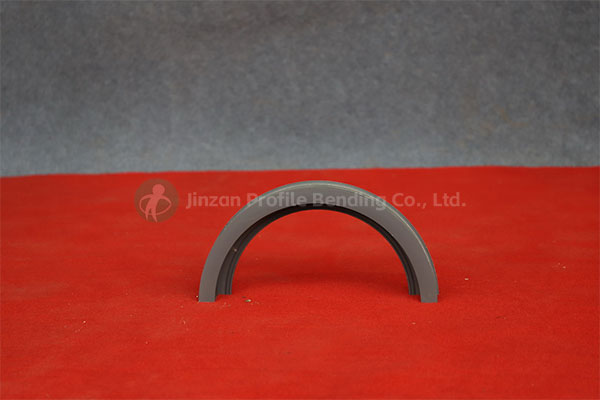Redefining the construction industry with innovative solutions, cuttin-edge technology and sustainable practices
Profile Bending 2025-06-24
Aluminum profiles are widely used in various industries due to their lightweight, corrosion resistance, and versatility. Bending aluminum profiles is a crucial process in manufacturing, as it enables the creation of complex shapes and structures essential for applications in construction, automotive, aerospace, and more. However, achieving high-quality bends in aluminum profiles can be challenging due to a range of influencing factors.
1. Material Properties
The intrinsic properties of aluminum alloys significantly influence the bending process. Key material properties include:
-Alloy Composition: Different aluminum alloys (e.g., 6061, 6063, 7075) have varying strength, ductility, and workability. Alloys with higher ductility are generally more amenable to bending without cracking.
-Temper: The temper of aluminum (e.g., T6, T5) affects its hardness and strength. For instance, T6 temper aluminum is more rigid and may require different bending parameters compared to softer tempers.
-Thickness: The wall thickness of the profile also plays a critical role. Thicker profiles tend to require more force to bend, and the likelihood of defects such as wrinkling or cracking increases.
2. Bending Method
The method used for bending aluminum profiles can significantly impact the final quality. Common bending methods include:
-Air Bending: This method involves bending the aluminum profile using a die with a gap that does not completely close. While it is versatile and suitable for various shapes, achieving precise angles can be challenging.
-Bottom Bending: In this method, the profile is pressed against a die, which allows for more accuracy in angle and shape. However, it may require more force and can lead to material fatigue if not properly managed.
-Roll Bending: This technique uses a series of rollers to gradually bend the profile. It is especially effective for large radius bends but may not be suitable for sharp angles.
Each method has its advantages and limitations, and the choice can affect the smoothness, accuracy, and appearance of the bend.
3. Equipment and Tooling
The bending equipment and tooling used in the process are critical to achieving high-quality results. Factors to consider include:
-Machine Type: CNC (Computer Numerical Control) bending machines provide higher precision and repeatability compared to manual machines. The automation of CNC machines reduces human error and enhances efficiency.
-Die Design: The design of the bending die plays a vital role in distributing forces evenly across the profile during bending. A poorly designed die can lead to uneven bends and surface defects.
-Maintenance and Calibration: Regular maintenance and calibration of bending machines are essential to ensure consistent performance. Any misalignment or wear can lead to defects in the final product.

4. Bending Parameters
The parameters set during the bending process, such as speed, angle, and force, are crucial for achieving desired quality. Key considerations include:
-Bending Speed: Higher speeds may lead to increased friction and heat, which can adversely affect the material properties and result in cracking. Conversely, too slow a speed can cause uneven bends.
-Bend Radius: The radius of the bend should be appropriate for the thickness of the material. A bend that is too tight can lead to cracking or deformation, while a larger radius may be more forgiving.
-Springback: Aluminum has a tendency to spring back after bending, which can affect the final angle. Understanding and compensating for springback is essential for achieving accurate results.
5. Environmental Factors
Environmental conditions can also impact the quality of aluminum bending. Factors to consider include:
-Temperature: The temperature of the environment can affect the material properties of aluminum. Higher temperatures can increase ductility, making the bending process easier, while colder conditions may lead to brittleness.
-Humidity: High humidity levels can affect the performance of certain lubricants used during the bending process, potentially leading to increased friction and wear.
6. Operator Skill and Experience
The skill and experience of the operators handling the bending process are critical. Well-trained operators are better equipped to manage the complexities of bending aluminum profiles, including adjusting parameters in real-time to accommodate variations in material or equipment performance. Continuous training and skill development are essential for maintaining high-quality standards.
The quality of aluminum profile bending is influenced by a myriad of factors, including material properties, bending methods, equipment, bending parameters, environmental conditions, and operator skill. By understanding and carefully managing these factors, manufacturers can optimize their bending processes, reduce defects, and enhance the overall quality of their products. As industries continue to demand more complex and precise aluminum profiles, addressing these challenges will be essential for maintaining competitive advantage and ensuring customer satisfaction in the marketplace. Continuous research and innovation in bending technologies and practices will further enhance the capabilities of aluminum bending, allowing for higher precision and efficiency in production.